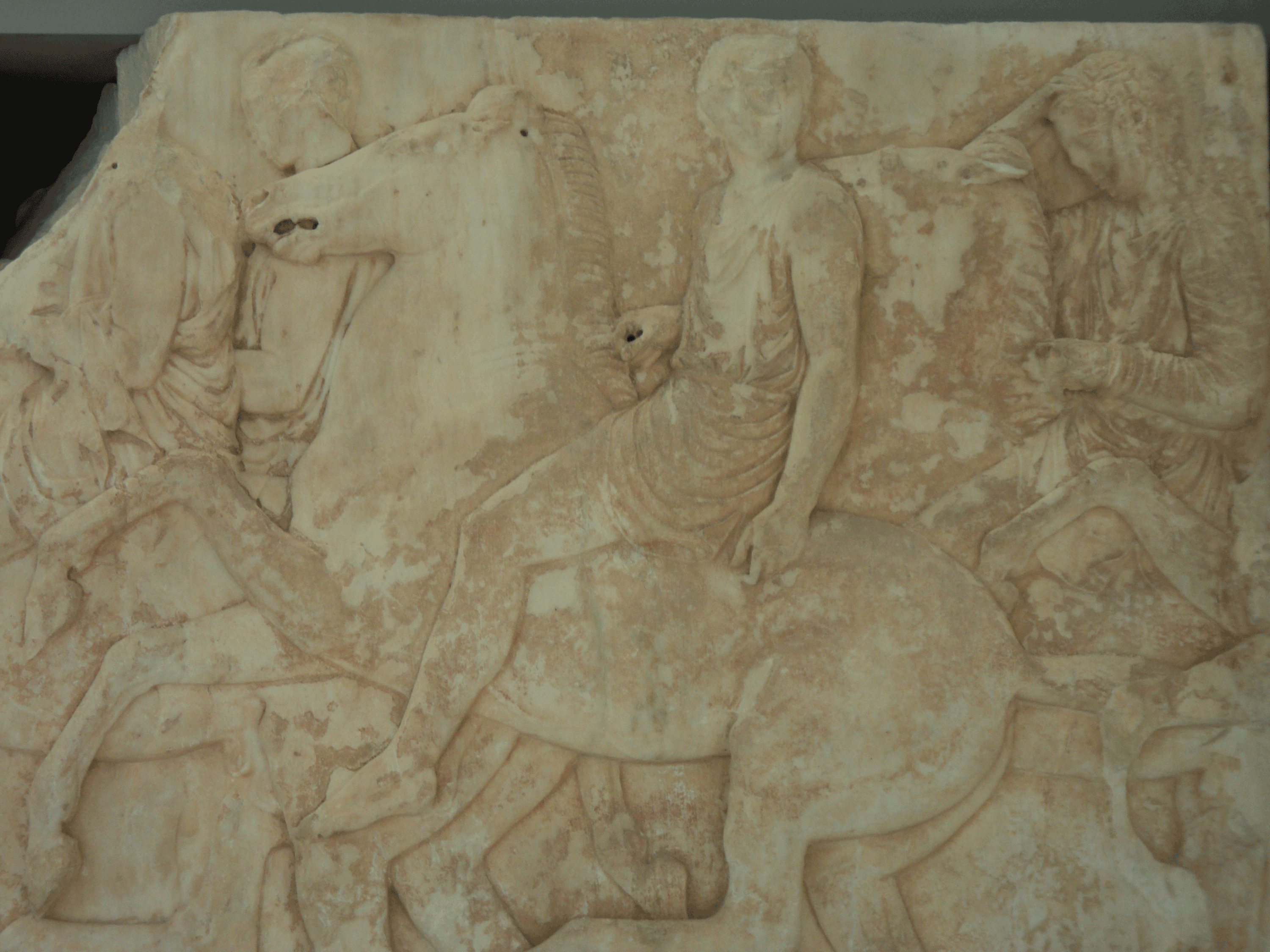

GG Grace
Below are photos of the famous stele (this is a cement replica) of Dexileos on the Street of Tombs commissioned by an aristocratic family from the deme Thorikos (a coastal district south of Athens). This stele marks the location of a cenotaph (that is, an empty tomb--Dexileos is not actually buried there) located in the Kerameikos not far from Athen's ancient Agora. Dexileos, a young cavalryman, was killed in the Battle of Koroneia in 394 BCE and the cenotaph was constructed as a family tribute to his bravery and defense of Athens. The young soldier was actually buried communally with the ashes and bones of his tribesman in another tomb in a different part of the Kerameikos, the public cemetery, the Demosion Sema.
Some scholars have noted that the cenotaph faces the public cemetery, possibly to symbolize that Dexileos' family was making a point to fellow democratic citizens that not all in the ranks of the hippeis (the Attic word for cavalry, therefore horse-owing aristocrats) were sympathetic to the oligarchic uprisings of 411 and 403 BCE, the latter of which brought the Thirty's reign of terror to Athens. 394 BCE, of course, was a mere five years after the execution of Sokrates, an execution some scholars believe was due to Sokrates' association with and mentoring of some of the rich young oligarchs who attempted to oliterate Athens' democracy in 403 BCE.


Dexileos Shrine
In ancient Attica, there were four social classes determined by wealth. Those with the means to own and maintain a war horse, the hippeis, were in the second highest (what a modern person might say) income bracket, often quite wealthy. The measure of wealth was according to production, by the bushel, of wet or dry products per year.
-
Pentakosiomedimno-wealthiest social class (500+ bushels)
-
Hippeis-second wealthiest class (Plato, Dexileos of Thorikos)
-
Zeugitai-third class, Sokrates of Alopeke, the philosopher
-
Thetes-lowest class, rowers for the triremes, et.al.

These proud, snorting rides are stabled in the Delphi Archeological Museum.

A black-figure amphora, dated 550–540 BC, housed
at the Louvre. Photo by Jastrow. Wikipedia.
(This image has been flipped.)


Kerameikos Museum
New Acropolis Museum